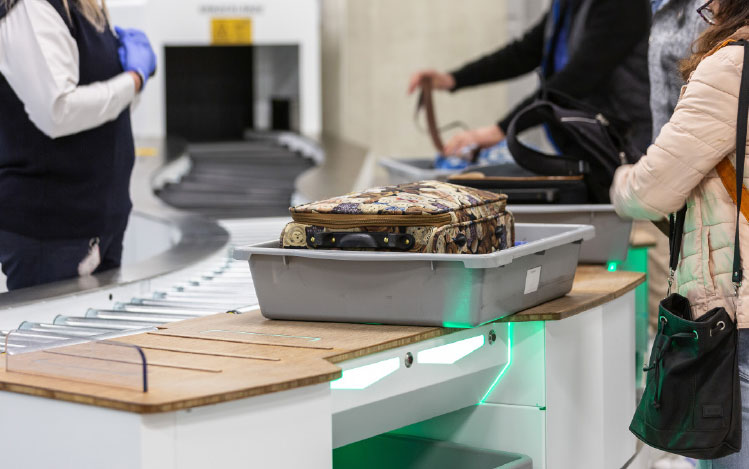An interview with Mark Elliott, Director Products and Partners, Vanderlande PAX Solutions. By Ross Falconer
Vanderlande’s PAX CHECKPOINT combines the Advanced automated screening lane (ASL) with configurable Multiplex screening software. The latest generation of Vanderlande’s Advanced ASL includes features designed to improve both operational efficiency and the passenger experience.

Vanderlande’s PAX CHECKPOINT combines the Advanced automated screening lane (ASL) with configurable Multiplex screening software.
“Fully modular, it can be customised to meet any airport’s specific requirements and integrated with both conventional and CT X-ray scanners,” explains Mark Elliott, Director Products and Partners, Vanderlande PAX Solutions. “The Advanced lane provides passengers with an intuitive experience throughout the screening process while also reducing the workload for security agents through the automation of manual tasks.”
Vanderlande’s centralised image processing (CIP) software also provides airports with flexibility as it can be configured for use with most X-ray scanners available on the market. Whether airports are screening images with traditional or CT scanners, or a mix of both, Multiplex screening software allows security agents to work with a single tool and a common user interface.
“This unique capability can significantly reduce the amount of training required, while improving the accuracy of the image analysis process,” Elliott adds. “Centralising this process also means that screening agents can be located anywhere on an airport’s premises to analyse images, which increases throughput and improves resource management. Analysing images remotely means that agents will benefit from a quiet environment away from the checkpoint’s distractions, which can have a positive effect on their performance and reduce the potential for insider threats.”
Vanderlande’s security checkpoint solutions have recently been installed and integrated with conventional and CT scanners in multiple airports worldwide.

Mark Elliott, Director Products and Partners, Vanderlande PAX Solutions: “Analysing images remotely means that agents will benefit from a quiet environment away from the checkpoint’s distractions, which can have a positive effect on their performance and reduce the potential for insider threats.”
“An airport’s security checkpoint can be chaotic and has multiple sources of distraction for screening agents,” says Elliott. “Such an environment can hinder their capacity to focus on image analysis tasks and lead to poorer results in threat detection. Allowing screening agents to work away from the busy checkpoint with remote screening software can have a direct impact on their performance.”
Vanderlande’s Multiplex software is designed to provide a user-friendly interface and advanced detection tools to ease the screening process. Elliott reports that, at one European airport, the software resulted in an 8% to 16% increase in the probability of detecting threats, with a two-second improvement in the average speed of threat analysis.
Elliott explains that, as new technologies such as CT scanners and biometrics are being introduced to the passenger screening process, it is essential for ASLs and CIP software to be able to integrate with solutions supplied by various vendors through an open architecture concept.
“Both the lanes and the software should also be configurable to meet airports’ current and future needs. For maximum flexibility, an ASL should be fully modular, meaning that each of its modules is designed and assembled separately to allow airports to easily change, upgrade or add modules when needed without changing the entire lane. In terms of screening software, a CIP solution should be able to integrate with both automated and non-automated lanes to allow for a complete centralisation of the screening process.”
Vanderlande’s team of experts works in close cooperation with customers and partners to ensure that its passenger checkpoint solutions answer the industry’s current and future needs. “The modular nature of Vanderlande’s ASL and CIP solutions allows them to consistently and quickly evolve to stay ahead of new industry trends and regulations,” Elliott concludes.







